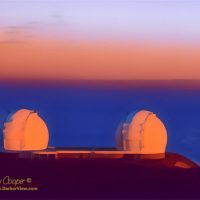There are two thing that opponents neglect to mention in this accusation. The observatories do pay the state money, quite a bit actually, about $4.4 million per year. Opponents also fail to understand why that $1 rent came about and the history of astronomy on the mauna.
In often nasty accusations, the $1 rent is used to imply that the observatories get a free ride, costing the state and county, and therefore the taxpayers. This is the part that is completely false, the observatories not only pay their share of costs, but have significantly benefited the island economy in very direct ways.
Continue reading “The observatories pay no rent?”






